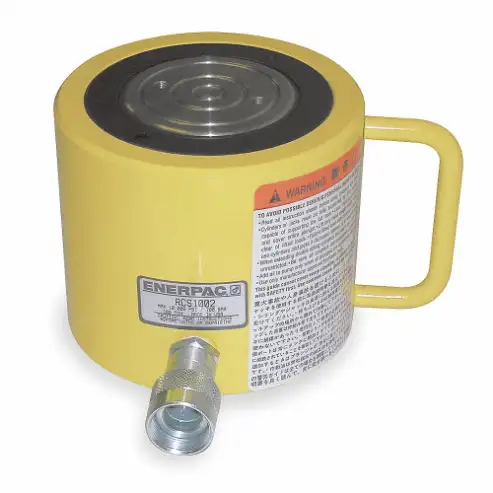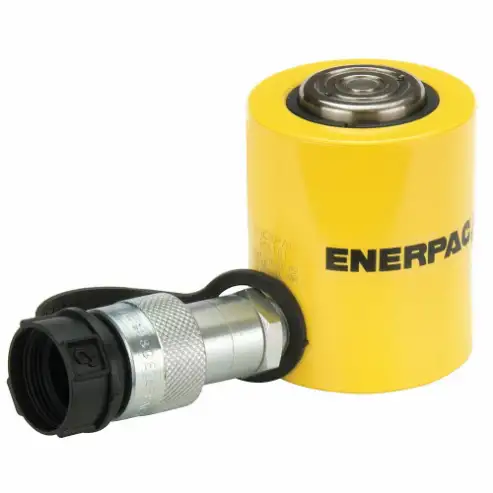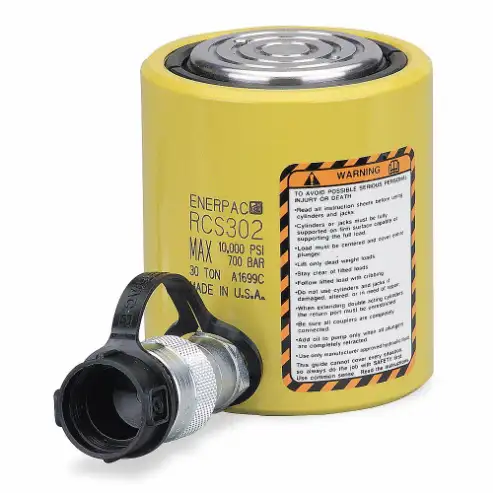Enerpac RCS-502 hydraulic cylinder serves as a linear actuator to provide unidirectional stroke and force in offshore and marine engineering applications. It is ideal for use in the aerospace, agricultural, oil & gas, mining and food & production industries.
Features:
- Enerpac RCS-502 single-acting hydraulic cylinder is designed for use in restricted spaces.
- It features a grooved plunger end with threaded holes for easy mounting.
- This Enerpac hydraulic cylinder RCS502 is equipped with a plunger wiper which decreases contamination & improves cylinder life, in addition to a CR-400 coupler and dust cap.
- It features steel construction with baked enamel finish that reduces rust & corrosion on exposed surfaces and structural rigidity.
- This Enerpac RCS-502 hydraulic cylinder has a unique GR2 bearing design to decrease wear and extend product life.
- It can be operated at pressures up to 10000 psi.
Compatible Accessories:
- Enerpac CATS53 Tilt Saddle: It allows for adjustable tilt angles, providing increased flexibility and precise positioning for lifting or tilting heavy loads with ease and accuracy.
Frequently Asked Questions:
Q. What do we mean by plunger cylinder?
A. A hydraulic cylinder with or without a piston is called a plunger cylinder.
Q. What are the different kinds of hydraulic cylinders?
A. Single-acting, double-acting, tandem hydraulic and telescopic / actuating hydraulic cylinders are 4 different types of hydraulic cylinders.
Q. Which fluid is used in hydraulic cylinders?
A. Hydraulic fluid is a non-compressible oil or liquid used in hydraulic machinery and equipment to transfer power. Although numerous substances can be used to create this hydraulic fluid, it is typically made of mineral, petroleum, water, or synthetic materials.
Q. What is the maximum load capacity of Enerpac RCS-502 hydraulic cylinder?
A. This hydraulic cylinder has a maximum load capacity of 48.1 tons.
Q. Is Enerpac RCS502 cylinder single-acting or double-acting?
A. Enerpac RCS-502 hydraulic cylinder is a single-acting cylinder, which means that it utilises hydraulic pressure to extend the piston, but relies on an external force of a spring to retract the piston.
 € EURChange Country
€ EURChange Country






